Equally at home on a sleek contemporary building, a classic Hamptons home or a country cottage, Colorbond Basalt is one of the most classic and easiest of the range to work with. This is also a colour that I specify regularly. I have all the tips to show you if you are interested in knowing how to use Colorbond Basalt for your next home or renovation.
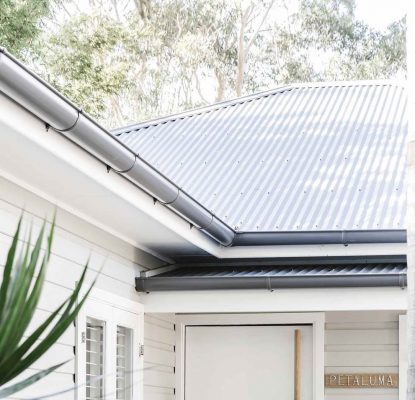
The mid tone colours in the Colorbond range
Remember, Golidlocks – not too hot or not too cold? This sums up Colorbond Basalt as it is the perfect mid tone neutral. If you live in a very hot area then I always recommend something from the light range of colours, like Surfmist, Shale Grey etc. to reflect the heat. Or if you live in a cold area then it is prudent to consider a darker roof to retain some of that lovely heat. Many areas inland though have freezing winters and boiling hot summers so it can work well to select a roof colour that is in between the two.
I find that Colorbond Basalt is very popular in Sydney and Melbourne and to some degree in South East Queensland. It really is a very user-friendly option from their range.
It's interesting to note that Colorbond only just includes Basalt in its medium grouping as it is right at the top end with a solar absorption of 0.69. I have listed the other Colorbond colours in this grouping that I use regularly:
Wallaby – This is exactly what it sounds like. A gorgeous rich grey brown reminiscent of a Wallaby's fur. Slightly lighter than Basalt, but not much. This is the colour to use with other warm tones like Dune.
Gully – More of a brown than a grey, it is nonetheless a lovely Colorbond tone for those who prefer a touch more colour. It is rich and warm and works well with other neutral tones and white.
Windspray – At the low end of the medium range, I consider this a light roof but officially it is a medium one. With undertones of green/blue, it is a classic cool grey tone which is popular on coastal homes by the ocean. You can read more about Windspray here.
The underlying colour in Colorbond Basalt
Anyone who is interested in colour and how it will work for your project, needs to firstly understand about underlying colours. If you have ever considered the dizzying array of whites available, you will see when you study them that they all have an underlying colour – either cool blue, neutral green or warm yellow/pink. This is the same for blacks and greys and all the gorgeous neutrals that we use 90% of the time. If you can identify the underlying colour in a neutral or white then you are well on your way to selecting the right one for your home.
The answer to the underlying colour in Basalt is blue. However, underlying colours on roofing can be one of the most difficult to understand as the look of the roof will change depending on the time of day. The house below demonstrates this perfectly. Nestled into the bush in a coastal location, I specified Basalt for this roof and gutters. In the sun, the roof just looks light grey but in the shade, it is showing more blue. In the early morning or late afternoon sun, you can also see more blue.
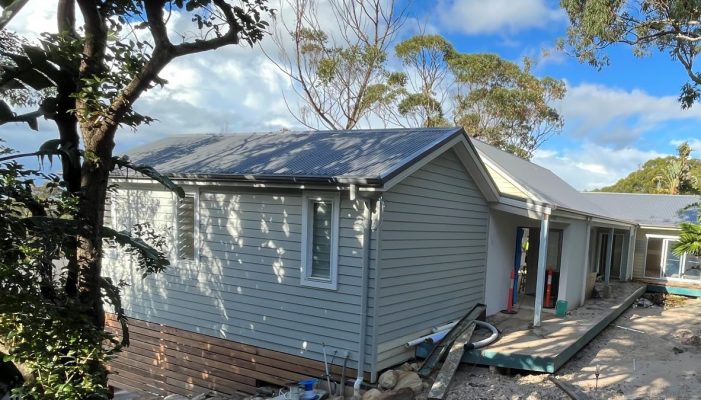
Mitch and Mark's house on The Block last year had a matt Basalt roof in a standing seam profile, Basalt gutters and a Basalt garage door. You can see how much lighter the roof is than the guttering and the garage door. This is a good example of how much lighter roofing is than when you look at a sample.
Mitch and Mark painted their fascias and barge boards a lovely fresh white to offset the dark gutter.
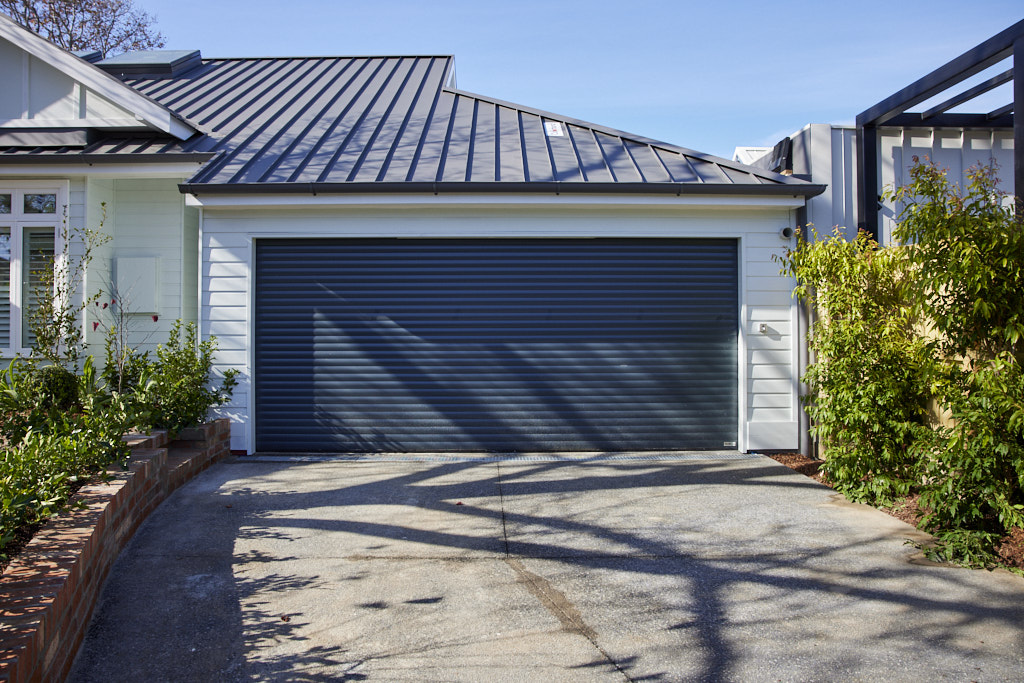
Which colours does Basalt work with
Although Basalt has an underlying colour of blue, it is still a pretty neutral grey and I find that it works well with a lot of different colours.
It certainly looks fabulous with white on a coastal home and this could be a warm or cool white. I also like to use Basalt with blue or green based greys. I don't use it however with the warmer greys.
I do love to use Basalt with warm neutral greige tones. For example Dulux Baltic Beige is a great neutral for classic Hamptons style homes and with white trim and a Basalt roof, this is a great exterior colour scheme. In fact, Colorbond Basalt is my usual go-to roof for a Hamptons style home.
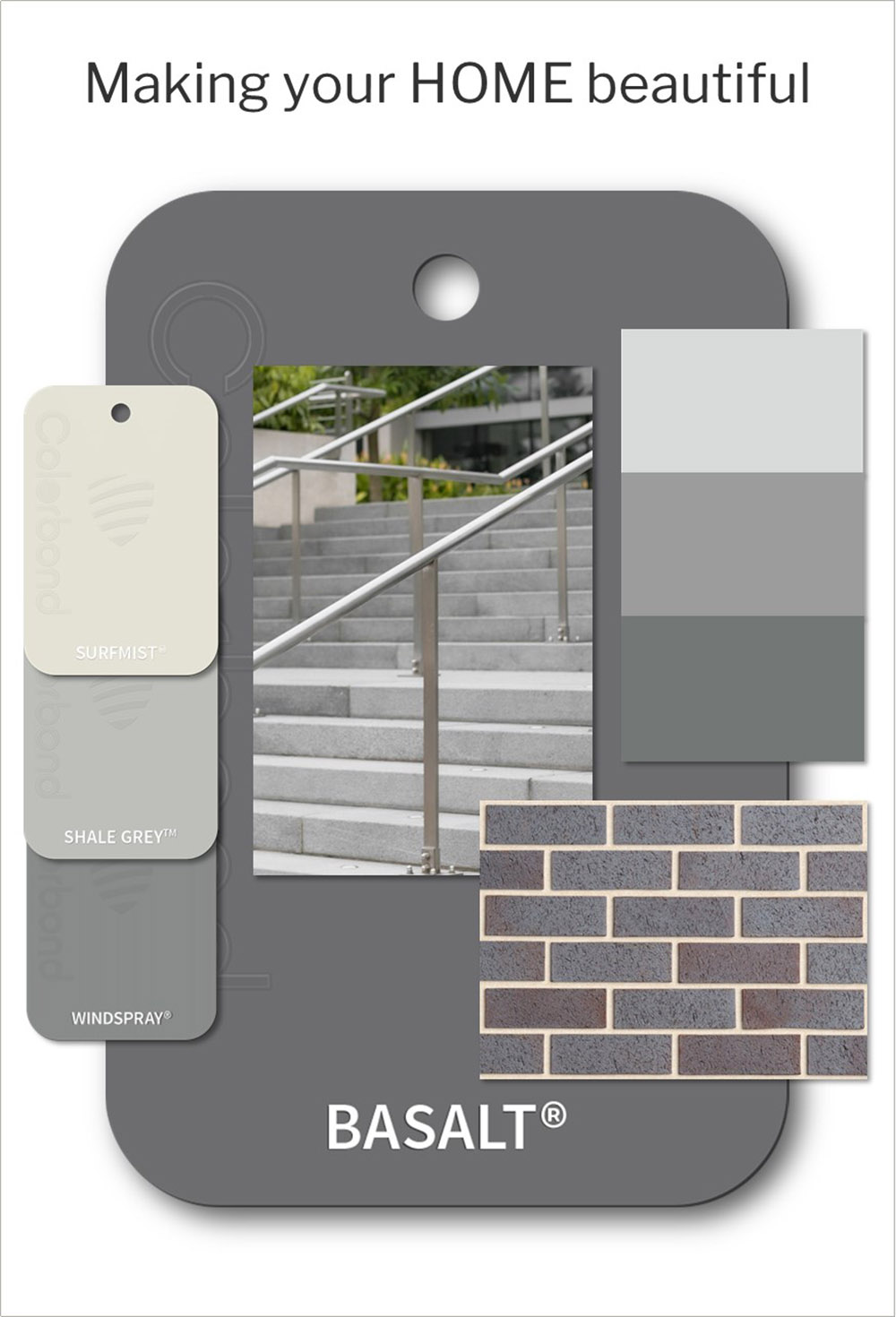
Related: What is greige? Find out how to use it in your home
Colorbond Basalt is a matt colour
The appeal of Basalt is that it works with so many styles. So while it is a classic roof for a Hamptons style home, it is a fabulous choice for a very contemporary home, particularly in its matt finish. Matt finishes absorb more light and are therefore darker than the same colour in the standard finish.
A current trend that is becoming more popular is to use the Colorbond matt range for walling too with Monument, Surfmist and Basalt being the most used. Basalt is a good option as it isn't quite as dark and heavy as Monument.
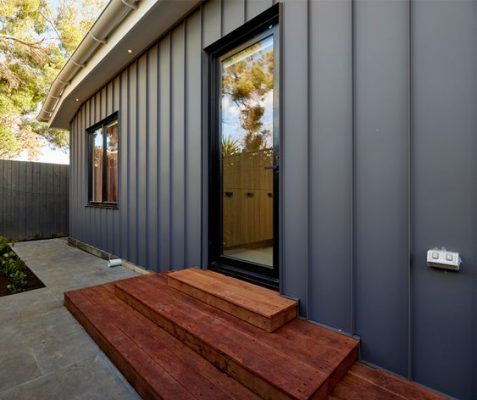
Standing seam walling in a matt Colorbond Basalt was used for a home on The Block. It offers a very sleek and contemporary solution.
Using this as a paint colour
Any of the Colorbond colours can be used as a paint colour and Basalt lends itself to this perfectly as on walls it is a lovely dark grey with just a hint of blue.
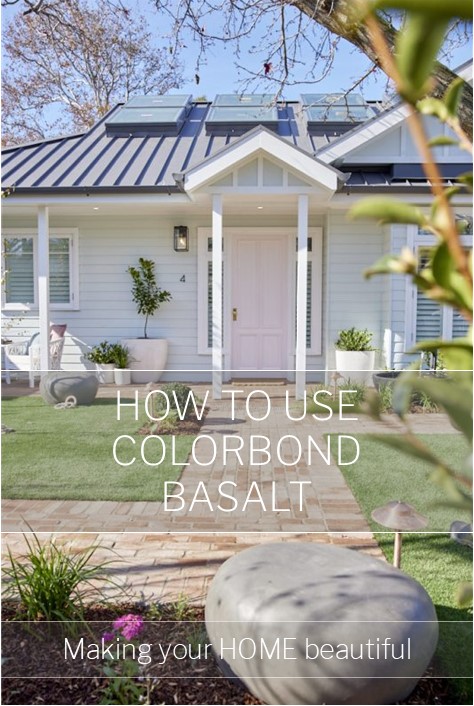
I have written lots more about Colorbond here
You may also be interested in How to select roofs, gutters & facias.
If you are building a new home or renovating an existing one, you should check out my FREE Resource Library which has comprehensive checklists and e-books to help you with your project. You can download them for FREE here.

could you please suggest a neutral white colour for exterior cladding . For a Hampton/Coastal style two story house. The roof is colorbond Basalt. Windows etc are pearl white.
Hi Lisa The white you use depends very much on how much depth you want and also whether the house is in sun or shade. A good go to white for exteriors is Dulux Snowy Mountains but you will need to try it out on a large board and move it around to see whether you like the effect. Hope this helps Samantha
Hi Samantha, thank you for an insightful article. Could you please recommend a render colour to go with Basalt? We’re not sure if it should be one the white-ish side (e.g. Surfmist) or light-greyish (e.g. Dieskau). It is a double storey with the front of the house facing North. Thanks!
Hi Kate you can use either, Basalt is a neutral grey with just a touch of a blue undertone and it will work with both Dieskau, which is a very light grey outside, or a white. You also need to think about what you will use for your gutter and fascia as this will bring more of the Basalt in if you match to the roof, or you can have a white gutter and fascia with Surfmist and then you don’t notice the roof colour as much. If you are facing north, any white you use will need to have a lot of depth. There are so many factors to bear in mind so it is difficult to suggest an exact colour, but first think about your gutter/fascia/garage door as this be a big impact on the scheme. I hope this helps Samantha
Hi Samantha, thank you for your helpful article. We live in New Zealand and have just stained our cedar weatherboards in Resene Pitch Black, which I am told is almost totally black. I think it has a blue-purple undertone. Do you think Basalt would work better with this near black than something like Windspray, with its softer green/blue undertone? If it helps, we live nestled under two large pōhutukawa trees, with the surrounding landscape being greenery, volcanic rock, and the ocean. Cold and wet in the winter and hot and humid in the summer. Thank you! Ryan.
Hi Ryan I think it really depends on whether you want to see more or less of a contrast between your weatherboards and roof. I do like the idea of Windspray in your location and it will help with the heat in the summer. But you need to consider whether you like the idea of a very dark house with a light silvery roof or one that is tonally more similar. I hope this helps Samantha
Hi Samantha ,
We have a 1940 red brick cottage in Cowra , we are replacing an existing old colour bond roof .. we are having white fascia and gutters … Would Basalt work with this.
Thank you so much for your article.
Hi Leanne Yes I think Basalt should work as it is a good mid-tone option and will look good with all white trim against the red brick. Cheers Samantha
Hi,
Looking for some recommendations.
If we have wrap around colorbond fencing in Basalt, then a double storey cladded house, upper level is currently deluxe silver tea set.
We need to replace our bottom level garage doors and are trying to decide what colour to put for the doors and the bottom level, we were thinking Monument as we also have walnut timber accents (privacy screen wall visible from street) but worried monument will clash with the basalt fencing right next to it?
What colorbond colours would you recommend to go with dulux silver tea set and the basalt on the fencing?
Hi Kim Colorbond Southerly is a very similar colour to Dulux Silver Tea Set so this could be worth considering. However it is very difficult to say without seeing the overall look of the house and whether a dark or light coloured garage would suit the house. Samantha